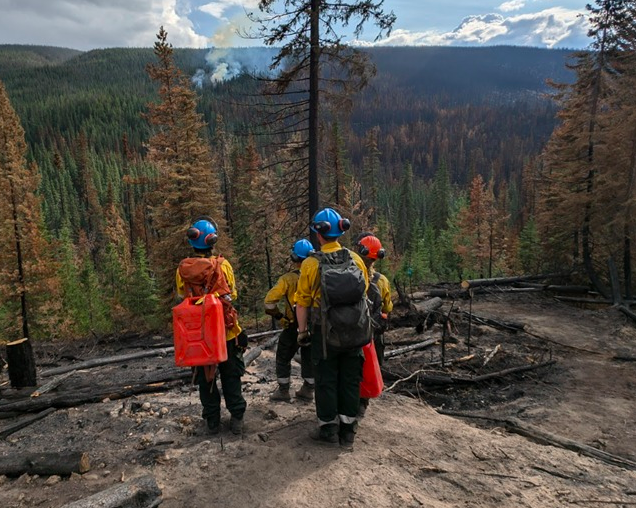More than 40 millimetres of rain over the weekend has helped wildland firefighters get a handle on the Jasper Wildfire Complex.
The wet weather, which started on August 23 and continued throughout the next day, will speed up crews’ ability to extinguish deep, dangerous hot spots throughout key, active areas of the still-burning wildfire. Some areas, including near Overlander Creek northeast of the Jasper townsite, received almost 49 mm of precipitation, according to Parks Canada.
“If that event was in winter, it would be almost 50 centimetre pow day,” said incident commander Landon Shepherd. “It was pretty impressive.”
Even with the downpour, however, fire fighters are still wary of deep hot spots—areas where fire has “dug in” to root pockets and places in the forest which are choked with deadfall and organics. In such areas—such as on the steep, north-facing, shady slopes of mountains, or in the washouts of seasonally-flooded out streams—large concentrations of fuel can accumulate, creating opportunities for fire to proliferate.
“Some of these ash pits are chest deep,” Shepherd said. “It makes it particularly dangerous for the crews because you think you’re on solid ground, but if the fire chews down it can suddenly be quite unstable.”
Shepherd said while crews will have to return to some of those ash pits, the rain will ultimately make that work more efficient. Similarly, in areas where firefighters were strategizing how to access rugged terrain—in canyons and gullies on the Whistlers Bench and on the south side of the Maligne Road, for example—the rain has extinguished the need for some of those dangerous duties.
“It eliminates trying to figure out ‘how the heck are we going to investigate this spot,’” Shepherd said. “That was a very nice gift.”

More than the rain, however, Shepherd said the fire has been kept at bay by the thousands of person-hours spent on its front lines, and by deploying an unprecedented amount of resources on it. Using hand-tools such as axes and polaskis to remove fuel; pumping water from beaver dams, ponds and other water sources; and changing the direction of the fire’s convection column by back-lighting fuels in the path of the wildfire, armies of personnel were able to knock down huge lengths of the fire where it threatened to leap ahead and grow.
“They just kept hammering things,” Shepherd said. “It was incredible, how they knocked off this massive perimeter.”
That was before the heavy rains. Since then, fire officials have been able to stand crews down as their progress has made them confident they won’t be fighting the Jasper Wildfire Complex into late fall, as once feared.

“If we find more heat out there we won’t reduce, but it’s feeling like we could be necking down to just a handful of crews by the end of the week,” he said.
Bob Covey // bob@thejasperlocal.com


